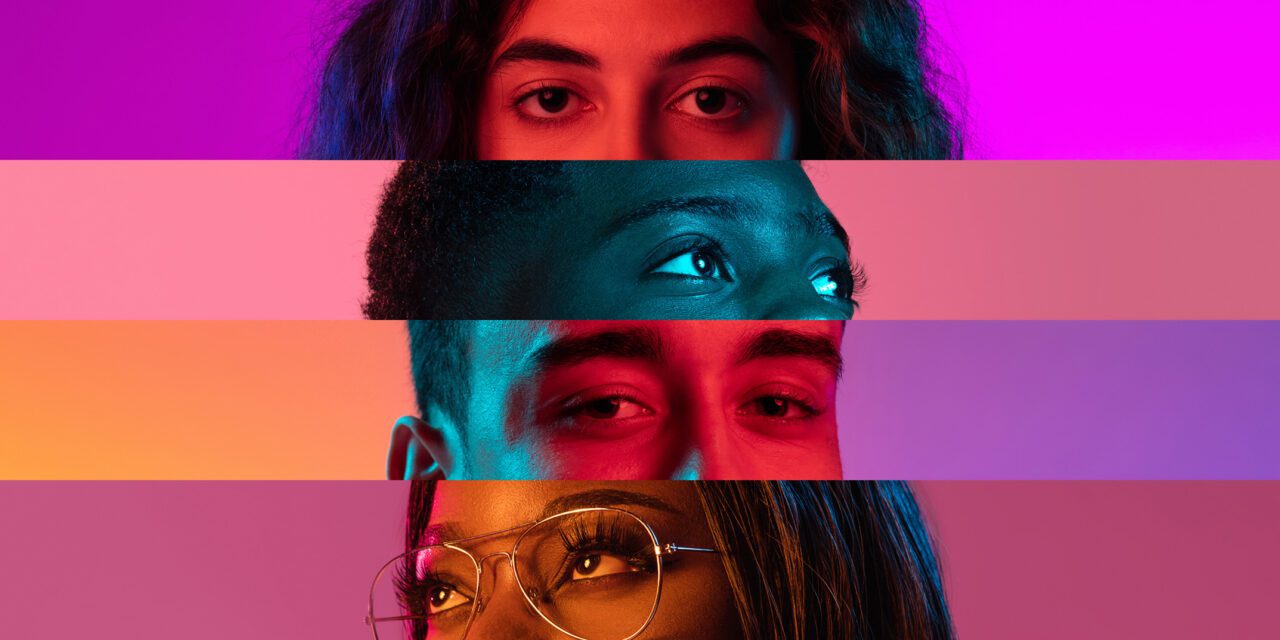By David Goldberg
Around the world each year, opticians dispense millions upon millions of pairs of eyeglasses.
Customers go into stores or use augmented reality apps online, trying on dozens of pairs, seeking the finest frames that fit firmly and without deviation.
This task is harder for some.
For decades, eyewear was tailored to a specific face type. It was difficult for people with larger-than-average bridge and temple sizes to find fabulous frames to fawn over.
Optical Prism spoke with some eyewear industry leaders and designers to get their take on the industry’s current selection of frames and the growing demand for a more diverse portfolio of offerings for all face types.
Phernell Walker sits on The Vision Council’s Diversity, Equity & Inclusion Taskforce.
He says eyewear designers have come a long way in offering form, fit and fashion designs to address the needs of diverse customers.
“It’s a multi-billion-dollar consumer base that’s been underrepresented for years and it’s great to finally see eyecare beginning to recognize this huge opportunity with some exciting new technologies.”
Walker says it’s time for eyewear companies to optimize designs by using the User Center Design (UCD) process for developing their eyewear.
He suggests partnering with consumers to determine their needs and wants. He also points out that some companies are using computer-aided design (CAD) technology in real-time to custom-design eyewear for each consumer allowing for unlimited possibilities.
“Optometric optician practices realize diverse teams bring a spectrum of perspective. Positive disruptive progress derives from a diverse group of people, coming together to create the future versus simply responding to it, leaving non-spectrum competing business models irrelevant.”
Robin Brush, training and education manager, Safilo North America, is an ABO-certified optician and has worked in optical for the last 26 years.
From her perspective, Brush says that, like the fashion industry, the eyewear industry is slowly branching out to meet the needs of more face shapes.
“We’re talking about larger eye sizes for men and women which are still trendy and fun to wear, and not plain or dated because of the larger size.”
Brush points to Safilo’s inclusion of Global and Asian fitting styles, which have been highly successful in North America, along with styles designed for the African American patient that are starting to be seen in more brands than in the past.
“Close-set eyes and a wide head have always been a challenge along with women who require a temple length of 145mm or longer. Full, round faces with high cheekbones can also be challenging.”
She advises paying attention to the patients who wear the glasses of your competitors.
“If you truly want to meet the needs of customers, go out into the opticals and meet your customers and the opticians selling your products. Get out of the office and put boots on the ground where your products are being sold.”
So, if you have time to curate collections from several different sources, is it safe to say that all face types can be serviced in today’s world?
At Sphere Optometry in Calgary, Alta, licensed optician and manager Bethany Thompson says she encounters a lot of patients and clients who have trouble finding the right fit.
“We see it a lot, especially with smaller fits. People that need something like a 46 to 48 eye size, are usually left shopping in the kids’ section. We like to make sure we have something for everyone, and it’s always cute to see how excited people get when they are so used to only seeing one or two options and they have 10 or 12 to choose from with us.”
Thompson says she is seeing some encouraging changes coming to the industry and companies moving away from carrying the same two or three shapes.
“I think that we’re starting to see more things like universal fits and nose pads on acetate frames, those are still hard to find, at least in terms of well-made independent lines. That’s something that would be nice to see more often, more inclusive fitting that way, especially lower bridges.”
